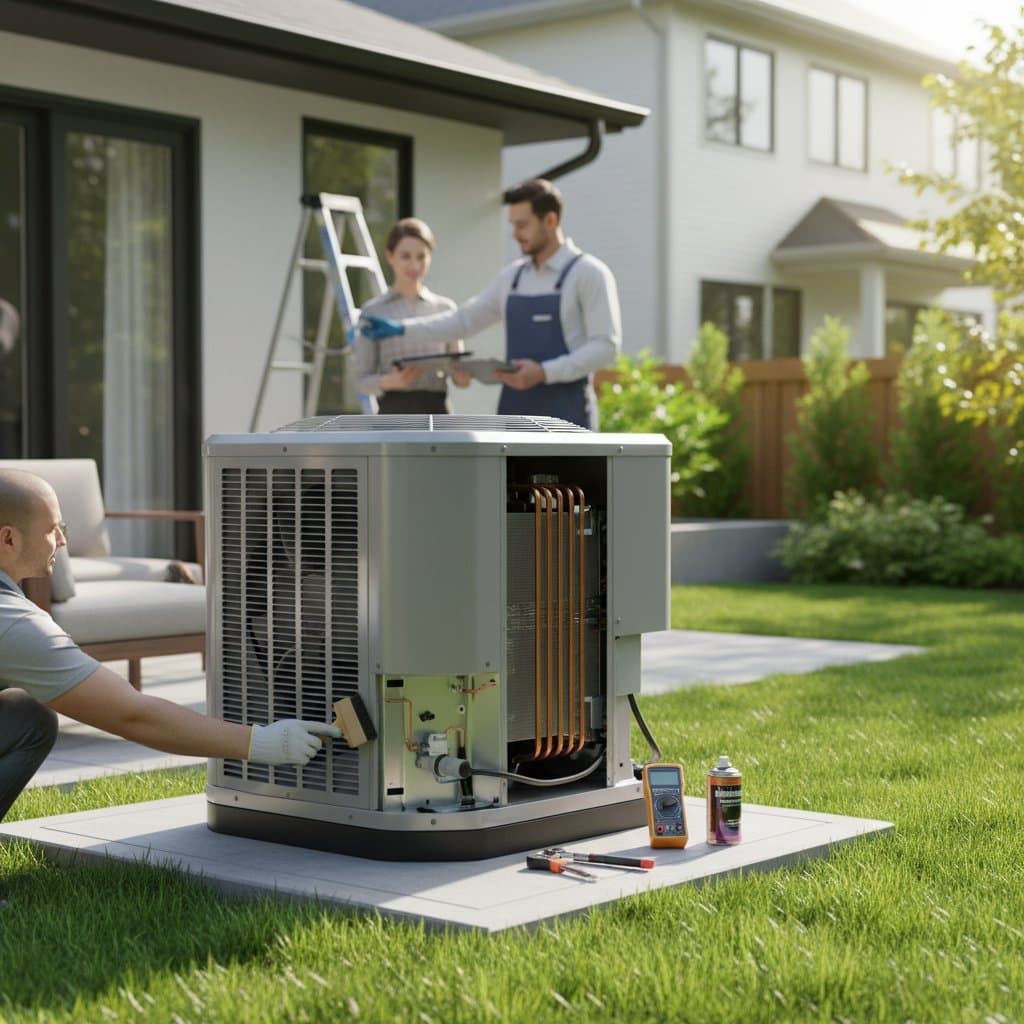Prepare Your Furnace Now for Hassle-Free Winter
A warm home on a cold evening depends on one essential element: a furnace that operates reliably when needed. Many homeowners delay maintenance until the first chill arrives, which leads to elevated repair costs, inefficient energy use, and extended waits for service. Early preparation eliminates these challenges and ensures comfort without unnecessary complications.
This guide provides straightforward steps that any homeowner can follow to ready the heating system for winter. It addresses inspection, cleaning, testing, and sustained care. These actions reduce expenses, prolong equipment durability, and decrease heating costs.
Essential Furnace Tune-Up Checklist
This checklist offers a structured approach to furnace preparation. Homeowners can manage several tasks independently, though some require a licensed technician for safety and precision.
1. Inspect and Replace the Air Filter
Clogged filters impede airflow and diminish system efficiency. Examine the filter each month during the heating season. Hold it up to a light source; if light does not pass through, install a new one matching the size and type specified by the manufacturer.
Tip: Maintain a stock of replacement filters nearby to facilitate prompt changes.
2. Clean Around the Furnace
Remove dust, storage boxes, and other items from the vicinity of the furnace. Maintain a clearance of at least two feet on all sides to promote adequate ventilation and minimize fire hazards. In basements or utility rooms, perform regular sweeping and vacuuming of the surrounding area.
3. Check the Thermostat
Switch the thermostat to heat mode and increase the setting several degrees above the ambient room temperature. Observe whether the furnace activates; listen for the startup sequence. If it fails to respond, verify the thermostat batteries or inspect the circuit breaker panel. Consider a programmable model to optimize heating schedules and conserve energy.
4. Inspect the Vents and Ducts
Tour the home to confirm that all vents remain unobstructed by furniture or carpeting. Accumulated dust on vent covers hampers airflow; detach the covers and vacuum both interior and exterior surfaces. Uneven temperatures across rooms may indicate duct leaks or obstructions, warranting a professional evaluation.
5. Test the Ignition System
Contemporary furnaces employ electronic igniters rather than standing pilot lights. Failure to ignite often stems from residue buildup, necessitating cleaning or part replacement. Professionals should handle this procedure due to involvement of gas lines and electrical elements.
6. Lubricate Moving Parts
Motors, bearings, and fans require appropriate lubrication to function smoothly. Sealed components in recent models eliminate this need, but older systems benefit from annual application. Select lubricant types endorsed by the equipment manufacturer.
7. Check the Blower and Belts
The blower circulates air through the furnace and duct network. Examine blades for dust accumulation and assess belt tension. A high-pitched squeal typically indicates belt wear; replace it promptly to prevent operational interruptions.
8. Inspect the Flue and Exhaust
The flue expels combustion byproducts to the outdoors. Scan for rust, deterioration, or unsecured connections. Obstructions in exhaust pipes risk hazardous gas accumulation. The presence of a metallic scent or soot residue demands immediate shutdown of the unit and professional intervention.
9. Test the Safety Controls
Furnaces incorporate safety mechanisms to avert overheating or gas escapes. Technicians verify the functionality of limit switches, flame sensors, and emergency shut-off valves during tune-ups. Such evaluations safeguard the household and its occupants.
10. Run a Full Heating Cycle
After completing inspections and cleaning, activate the furnace for approximately fifteen minutes. Monitor for atypical sounds, assess airflow consistency from vents, and observe the thermostat to ensure it achieves and sustains the desired temperature.
Common Furnace Problems and Quick Fixes
Regular maintenance mitigates most issues, yet minor malfunctions may arise. Familiarity with basic diagnostics enables swift resolution and sustained warmth pending professional assistance.
| Problem | Likely Cause | Quick Fix |
|---|---|---|
| Furnace not turning on | Thermostat setting or power issue | Verify circuit breaker, install fresh thermostat batteries |
| Weak airflow | Dirty filter or blocked vent | Clean or install new filter, ensure vents remain open |
| Frequent cycling | Clogged filter or thermostat location | Relocate thermostat from heat sources, replace filter |
| Strange noises | Loose components or worn belt | Secure fasteners, examine belts |
| Cold air blowing | Pilot or igniter malfunction | Engage technician to evaluate ignition system |
Safety Warning: Avoid attempting repairs on gas leaks or internal wiring. In the event of a gas odor, deactivate the furnace, evacuate the premises, and notify the gas utility or emergency responders.
Real Experiences from Homeowners
Homeowners frequently recount relatable challenges on online forums. One individual detailed a furnace failure during a subzero night, traced to a neglected filter. Since adopting monthly replacements, they report uninterrupted performance.
Another shared substantial savings on utility bills after addressing duct leaks and adding a programmable thermostat in autumn. Such accounts demonstrate the profound impact of proactive measures on both comfort and finances.
Visual Aids to Support Maintenance
Suggested Images:
- Photo of a homeowner replacing a furnace filter (alt text: homeowner installing new furnace filter for better airflow)
- Diagram of furnace components with labels for key maintenance areas (alt text: illustrated guide to primary furnace elements)
- Image of a technician using a gauge to measure gas pressure (alt text: expert assessing furnace gas levels in service check)
Suggested Chart:
Develop a visual comparison of costs, illustrating the average expense of routine annual servicing against emergency interventions, alongside energy reductions from well-maintained versus overlooked systems. This representation clarifies advantages and underscores enduring benefits.
Establish a Comprehensive Seasonal Routine
Integrate furnace maintenance with broader autumn preparations, such as clearing gutters, validating smoke alarms, and sealing window gaps. A unified seasonal protocol fosters overall home efficiency and security throughout the year.





